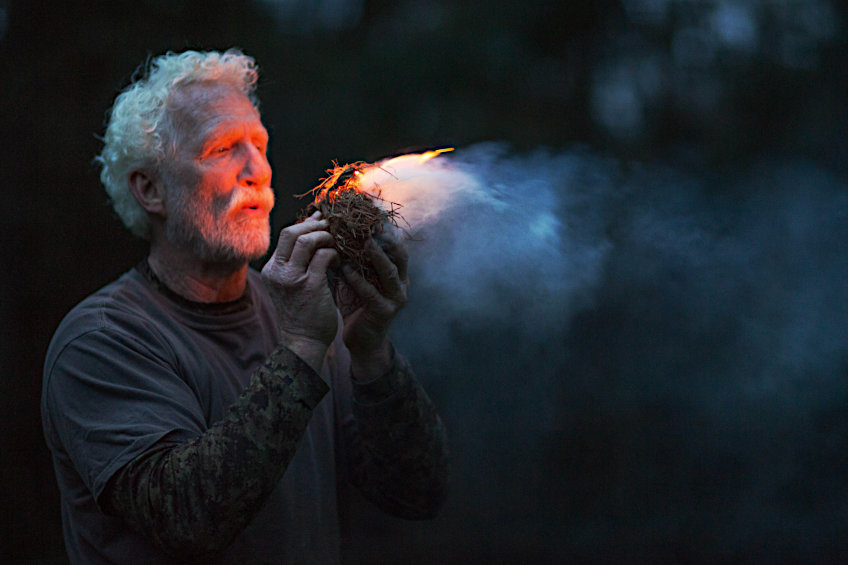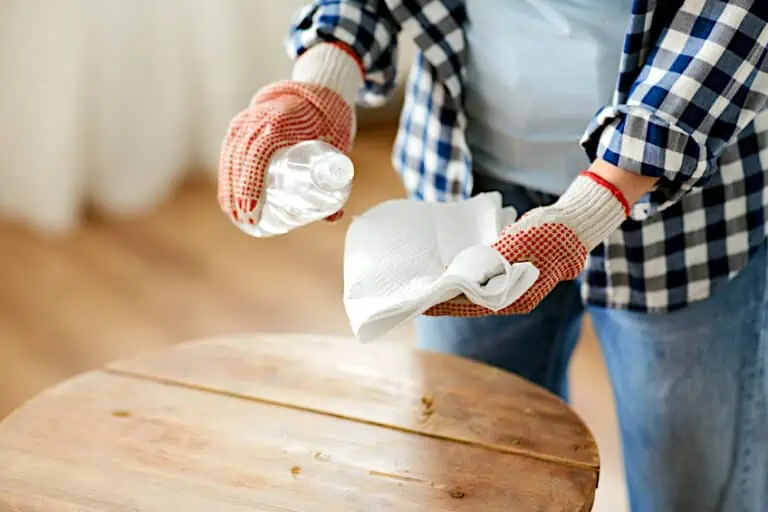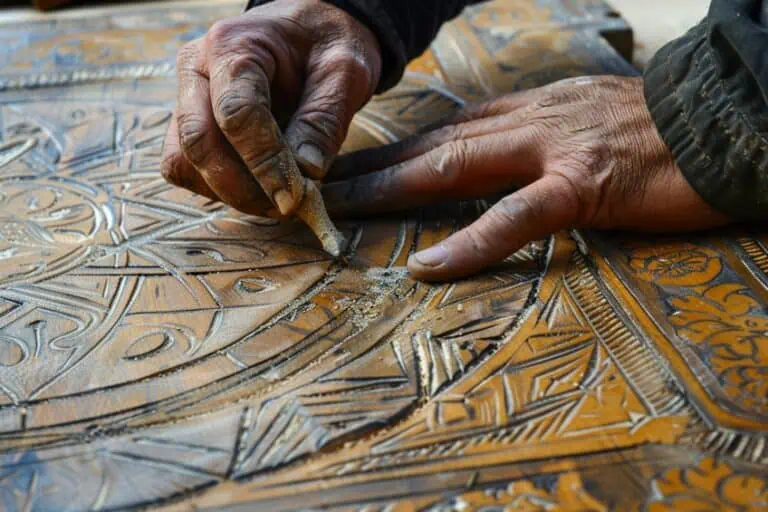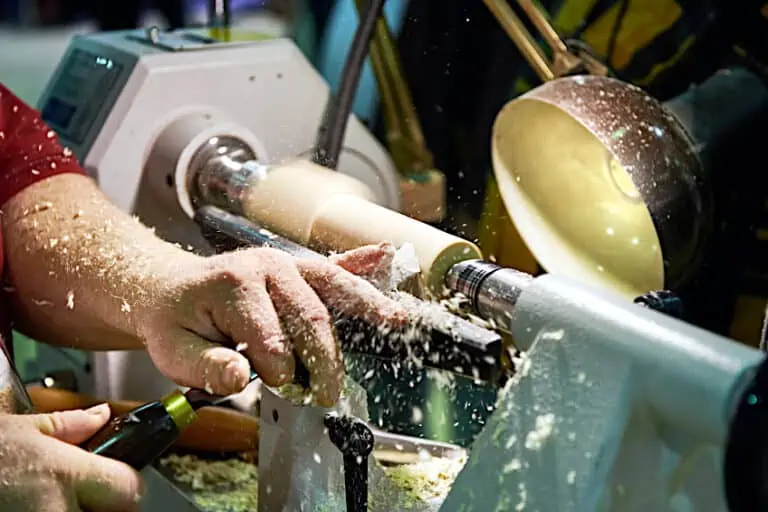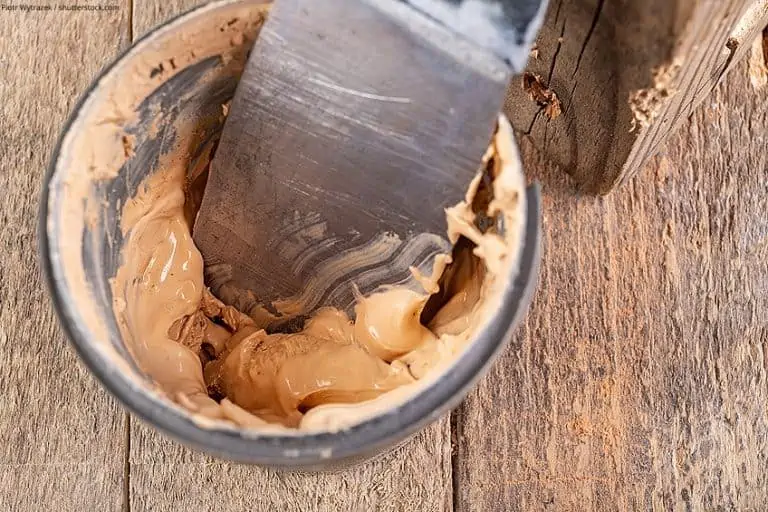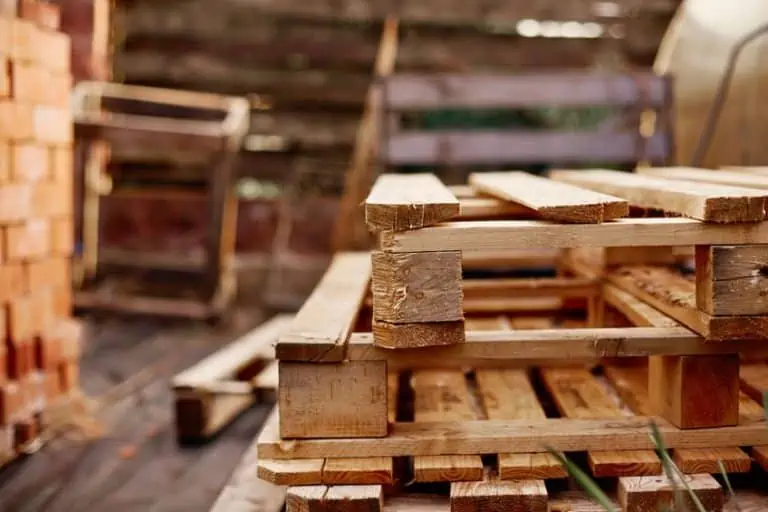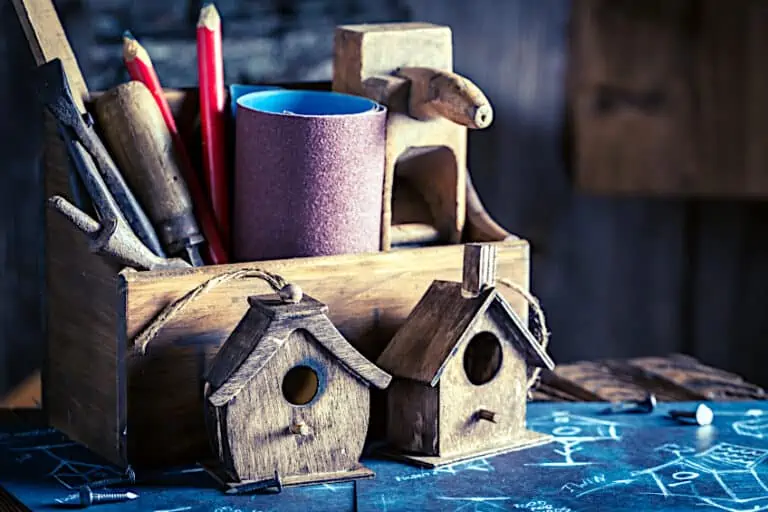How to Start a Fire – Best Fire-Ignition Tools and Techniques
Fire has many uses, from keeping us warm to cooking our food, but they can be tough to make. If you’re having trouble making a fire, or finding a fire structure that suits your needs, we’ve prepared a list of fire structures you can use for every occasion. So, without any further ado let’s have a look at how to start a fire, how to do so safely, and why safety is so important when working with such a volatile element.
Essential Tools and Materials Needed to Start a Fire
Starting a fire requires a certain set of tools. Ensuring you have the right tools for the job reduces the probability of your fire burning out of your control or not starting at all. That being said, here are a few things you will need to ensure your fire is started correctly, and most importantly, as safely as possible within reason.
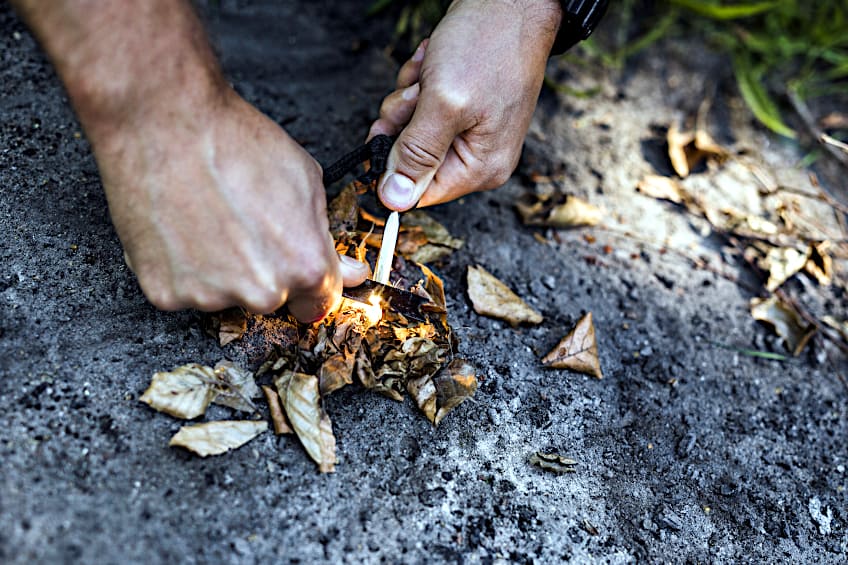
Wood
While there are many things that can be used as fuel to start a fire, to start a basic fire all you need is some good quality wood. Ready-cut wood sold in-store and at lumber yards is the most convenient as the logs are dry and cut into conveniently so they can be easily stacked up.
If you are collecting firewood, we recommend you acquire dry wood, and some easily combustible kindling too.
Flint
Flint is used to create a spark. While you can start a fire with friction, the more convenient and far less labor-intensive way to start your fire is by using flint.
Striking the flint will produce a spark, which should ignite your kindling and create a little fire, which will hopefully ignite your logs and start your fire off correctly.
You can now also buy ferrocerium rod fire starting tools that will ignite your fire in a quick and safe manner.
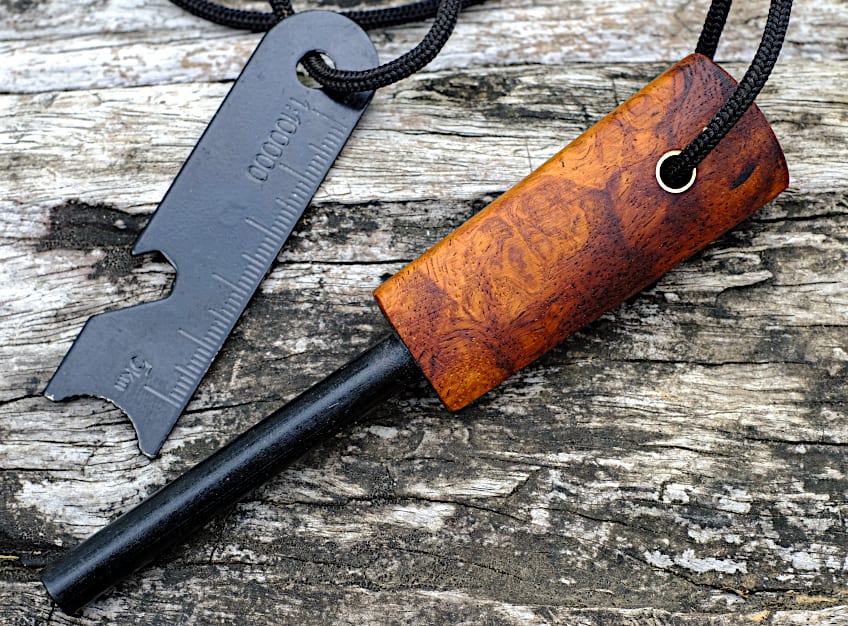
An Ax (If Needed)
You will need an ax to chop wood. If you cannot get your hands on ready-cut wood you could simply forage some wood with permission from your local authorities. Cutting wood can be dangerous so ensure you implement the right technique and ensure that you are wearing a good pair of gloves while you work.
A Fire Ring
A fire ring is used to contain a fire. Fire rings are usually made out of rocks that are embedded in a circle around the fire. This prevents the fire from spreading, and as long as your rocks aren’t light enough to be easily moved, you should be fine. If you cannot create a fire ring, a sufficiently deep fire pit (made of a simple hole in the ground) should be fine.
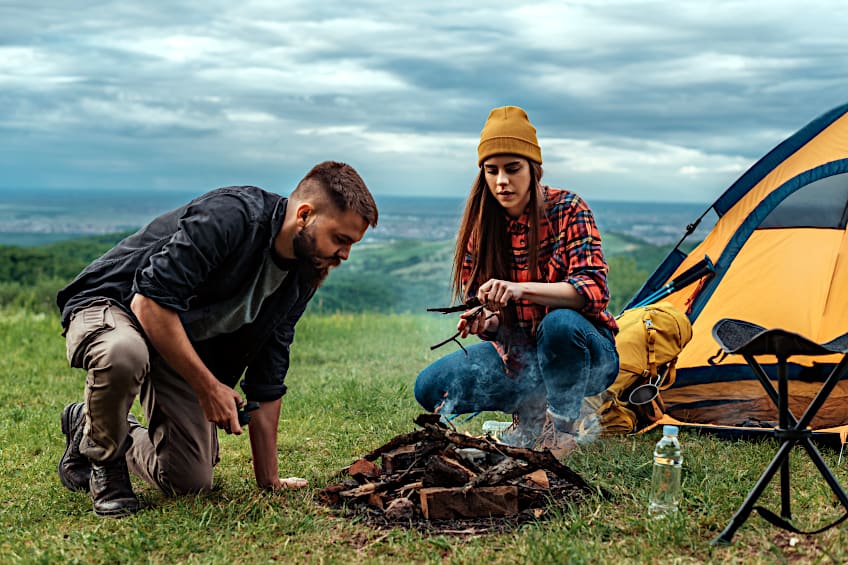
Gloves
You will also need some gloves. It goes without saying that fire is hot, and human skin burns quite easily. Wearing a good set of gloves not only ensures your hands are protected from open flames but it will also ensure that you don’t accidentally pick up any splinters.
Gloves graded for use with open flames are readily available both in-store and online.
Fire Starting Techniques
Part of knowing how to make a fire is understanding how to implement different fire-starting techniques. There are many fire-starting techniques to choose from, some of which are better suited to some situations than others.
Understanding when each is best to use can save you lots of time, effort, and frustration. Here are a few fire-starting techniques you can familiarize yourself with for your next barbeque or camping trip.
The Teepee Method: Step-by-Step Instructions
The teepee method is one of the most popular structures used when camping. If you’re wondering how to make a fire using this technique the clue is the name. The teepee log structure is shaped like a teepee tent, featuring logs positioned upright with their tips resting against one another.
This structure is a fast and reliable means of starting a fire.
To create your teepee structure, simply stack your kindling upright in the shape of a teepee at the center of your fire pit. Next, place your burning logs around the edges of your kindling teepee to form a square. This should resemble another fire structure known as the crisscross structure, with the only difference being that one side of the square log frame is left open so the fire can breathe.
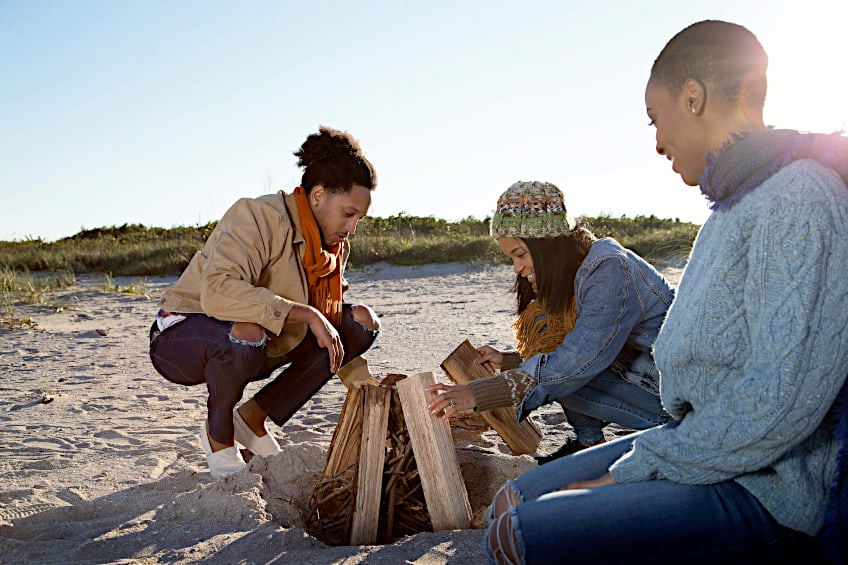
Additional logs can be stacked up along the sides of your kindling to resemble a log cabin structure. Once your structure is ready, light your kindling on fire using a match or lighter. If you’re a bit hesitant to get close to the kindling, you could light some old newspaper on fire and insert it into your kindling teepee at the open end of your structure.
This method is ideal for fires that need to be started quickly.
That being said, if you’ve arrived at your campsite later than expected or find yourself needing a fire for a spontaneous barbeque, this is one of the best techniques for the job. Keep in mind that this structure can be used to make fires on the ground and on elevated platforms.
The Lean-To Method: Setting Up the Foundation
If you still want to know how to make a fire quickly but don’t like the teepee method, the lean-to-fire structure is a great alternative. Like the teepee method, the lean-to method perfectly described the shape of this fire structure as it’s essentially some smaller logs leaning against a bigger one with some kindling in the middle to fuel the fire.
To create your lean-to fire structure you will need a big log or rock.
Position your log or rock towards the direction your wind is blowing to block it out. Next, place your kindling behind the big rock or log and stack it up as densely as possible. Finally, get some smaller logs and lean them over your kindling and onto the edge of your big log or rock.
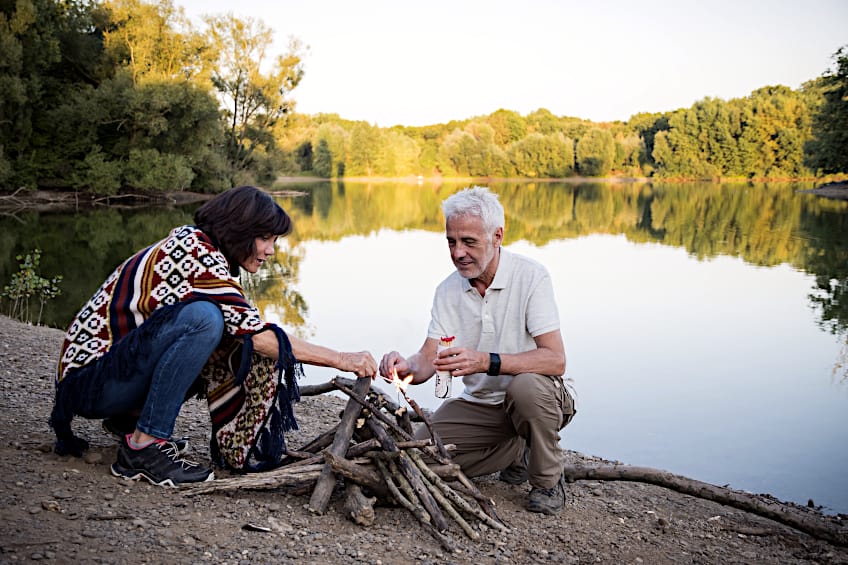
At this point, you should have something that resembles a rudimentary roofing structure with some kindling in the middle. All you need to do now is light your kindling using some matches, a lighter, or by striking your flint to get your fire started. To help your fire grow you could try fanning it a bit as your large rock or log could block out a lot of airflow.
The lean-to method is one of the easiest ways to start a fire and is one of the best structures for starting a fire quickly in high-wind conditions.
If you enjoy hiking trips and don’t want to go through the effort of making a teepee structure this is a great alternative especially if you don’t have a lot of time to start your fire.
The Log Cabin Method: Stacking for Maximum Airflow
The log cabin structure is easily one of the most commonly used fire-starting structures. This method, like all the other methods we’ve covered so far, is named after the way it looks. Essentially, the log cabin structure is a bunch of medium-sized logs stacked on top of one another in a crisscross configuration.
It is by far the easiest fire structure to make.
To create the log cabin structure, you are going to need a lot of kindling. Start by placing a lot of kindling in the center of your fire pit and stack it as high as you can without it being too unstable. Next, place a log on either side of your kindling stack so they’re parallel to one another. Next, bridge the gap between the two parallel logs by resting another two logs across the gap on their edges.
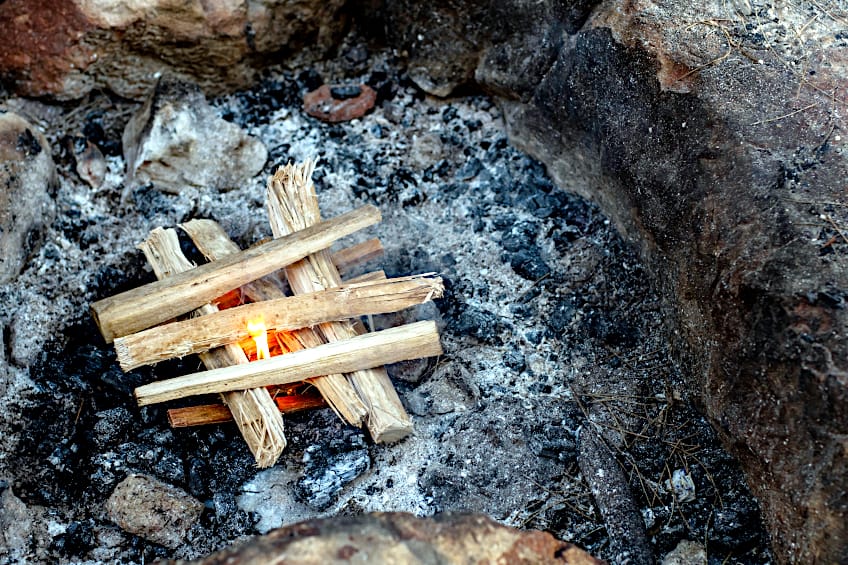
Repeat this process until you have around eight logs stacked on top of one another, which should just exceed the height of your kindling. You should have something that resembles a rudimentary log cabin structure at this point, and if your structure is stable, you can light your kindling using a lighter, some matches, or by striking your flint.
Log cabin fires are great for starting a small fire quickly, especially if you don’t have a lot of experience in fire starting.
This structure makes use of a lot of kindling and burning logs and tends to make fires that burn for a long time. This is ideal for keeping warm on camping trips but might be a bit difficult to cook on thanks to the shape and height of the structure.
Advanced Fire Building Techniques
While there are a few techniques you can use to start a fire quickly and easily, they might not be conducive to the environment you’re in or what you’re trying to achieve. This is why advanced fire-starting methods exist, so let’s have a look at some more intricate fire-starting techniques and why you might need to use them.
Upside-Down Fire: Maximizing Burn Time and Heat Output
If heat is what you’re after, then this advanced fire-building technique should be just what you are looking for. The upside-down fire, just as the name implies, is upside down. This doesn’t mean the flames burn toward the ground, rather they burn both up and down at the same time.
Essentially, you’ll be starting your fire on top of your structure instead of inside it.
Like other fire-starting methods, you are going to begin by laying down your kindling. Although, instead of fast-burning little wood pieces, you’re going to lay down some long-burning logs flat down in your fire pit or inside your fire ring. On top of these, you are going to stack some smaller logs in a crisscross structure, and then finally you’ll place your kindling on top.
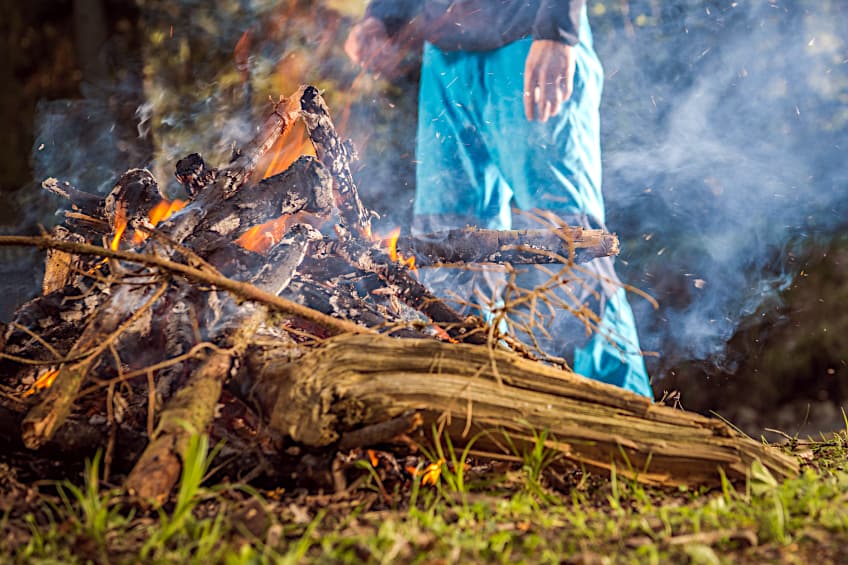
All that’s left to do after this is to ignite your kindling using your lighter, matches, or flint. Your fire should start pretty easily and begin to burn the crisscrossed logs at the top. The flames will eventually begin to work their way down to the long-burn wood you laid down first, generating a ton of heat and ensuring your fire lasts for a very long time.
The purpose of the upside-down fire is to generate a lot of heat and last for hours on end.
It works by projecting the heat downward, allowing the long-burn logs to conduct the heat and emit it outwards. This happens before the logs even catch fire, making it the perfect fire structure for outdoor parties or long-haul camping trips.
Dakota Fire Hole: Creating an Efficient, Low-Profile Burn
The Dakota fire hole is one of the more interesting fire-starting techniques. This setup is designed to ensure your fire isn’t seen from a distance and allows you to protect your flames from the wind. This is an idea for hunting trips where you might not want to attract unwanted wildlife, or if you’d like to keep a low profile in general. What is a Dakota fire hole though?
Essentially, you’ll have two holes dug next to each other, about a foot apart.
These holes are connected by a tunnel. One hole contains the fire and the other acts as a source of oxygen for the fire. This means that even though your fire is below ground it still has a constant flow of air, allowing your fire to breathe without constraint.

To make a Dakota fire hole you will need to dig your holes. The one that will house your fire should be slightly bigger than the one providing airflow. Once your holes have been dug, dig the connecting tunnel between them. Your tunnel should be about the size of your fist, and once the tunnel has been excavated you can drop your logs and kindling into the larger hole. All that’s left to do is light your kindling on fire using a lighter, matches, or flint and your fire should kick off pretty easily.
The Dakota fire hole is a very useful fire structure that should keep you warm and allow you to cook a meal discreetly, and it might surprise you how quickly one of these can be set up.
Swedish Torch: A Self-Contained Fire Source
The Swedish torch is an efficient, low-effort, and decidedly cool-looking fire structure that allows you to start a fire pretty much anywhere. This fire structure allows you to start a fire on frozen ground and doesn’t take much wood to get going either. The Swedish fire log, as you might expect, is a single log that when cut open is able to contain a fire.
To create a Swedish fire log, you will need a solid log or one that has been pre-cut.
If your log is pre-cut you can simply reassemble it and wrap a metal coat hanger around the exterior to hold it together. If you are using a solid log, use your splitting ax or chainsaw to cut the log into quarters or sixths and use a metal coat hanger to bind the pieces together (they do not have to be symmetrical).
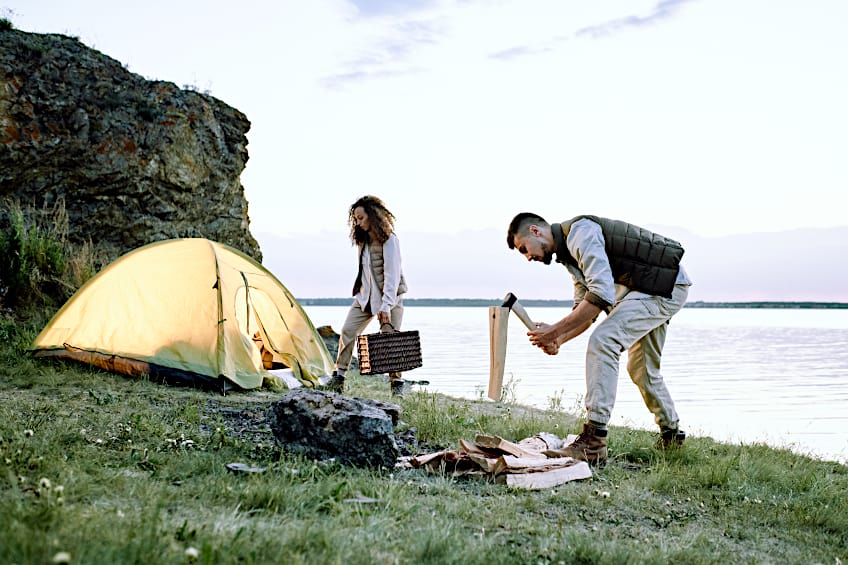
Next, gather your kindling and place it inside the log. Don’t overstuff the slits as you’ll need some breathing room for the fire once it’s been lit, but feel free to stack your kindling as high as you’d like. Once your log is ready all that’s left to do is light your kindling using your flint, lighter, or matches, and monitor your log as the fire grows.
This technique is extremely useful and may come in handy if you find yourself with few materials.
It also doesn’t rely on your ground being perfectly flat because the log stands upright, making it a great technique for starting a fire on wet, snow-filled, or frozen surfaces. Swedish long fires can be a bit labor-intensive to set up though, especially if you aren’t using pre-cut wood pieces.
Importance of Knowing How to Start a Fire Safely
Fire has the potential to create warmth, cook food, move steam engines, and melt steel. However, just as there are many good things fire is capable of doing, there are many bad and potentially harmful things that fire is capable of doing too.
This is why it’s extremely important for you to ensure that you always practice the utmost caution when starting a fire. Here are some reasons to ensure you are always as safe as possible.
Fires Spread Easily
Fire has the potential to spread easily. Starting a fire incorrectly in the presence of accelerants and flammable substances can result in a relatively tape fire spreading exponentially, potentially setting fire to surrounding objects, and clothing, and potentially burning people in the vicinity.
Therefore, safety precautions should be taken beforehand to ensure your fire does not spread.
Fumes Build Up
Fire quite literally burns things up. As it consumes material it releases smoke which can be harmful when inhaled and/or if it comes into contact with your eyes.
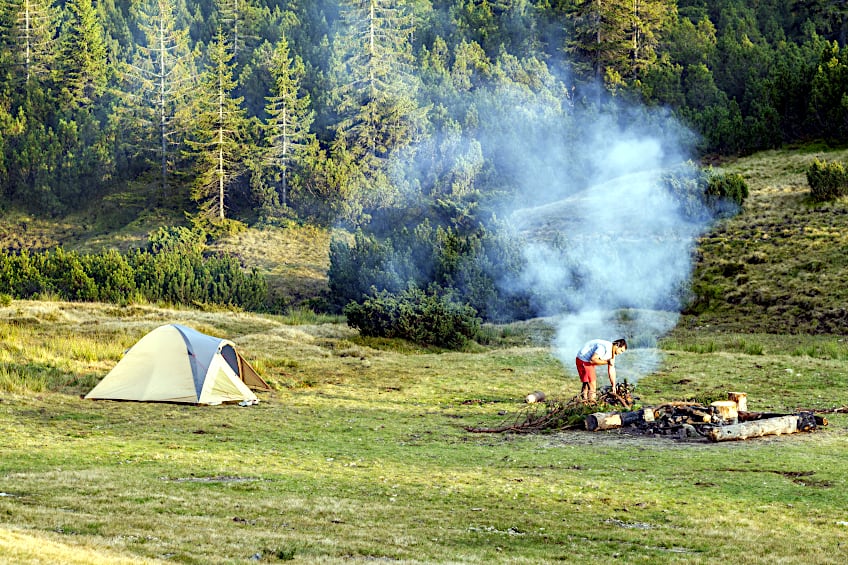
Starting a fire correctly can minimize the amount of smoke produced in the reaction, preventing you from potentially inhaling the smoke should it gather in a small, unventilated space.
Incorrect Kindling or Fuel Could Be Used
Knowing how to start a fire doesn’t just mean knowing how to create enough friction to cause ignition or how to strike a match. Having the incorrect wood or coal can cause your fire to fizzle out quickly or not start at all.
Knowing which materials are best for starting and maintaining your fire is important.
Environmental Damage Could Occur
Wildfires have caused extreme amounts of damage thanks to climate change and poor fire management skills. Starting your fire without preparing the immediate environment and ensuring conditions like prevailing winds won’t allow the fire to spread out of control is extremely important, and can prevent a large-scale uncontrolled burn from beginning.
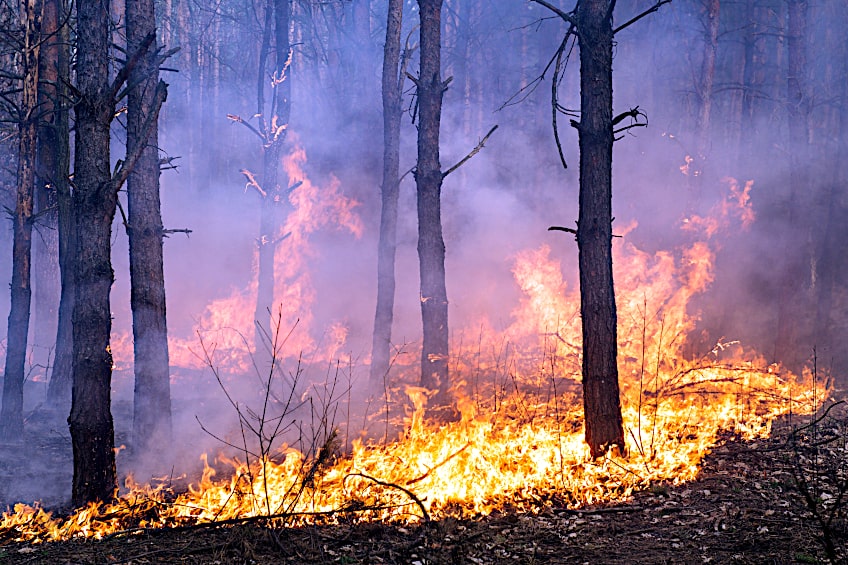
Fire Safety and Maintenance
There are many things that could go wrong if you behave irresponsibly around an open fire. This is why it’s important to follow safety precautions and avoid hazardous scenarios when working with any open flame. Here are a few tips you can follow to stay safe when starting and maintaining a fire both indoors and outdoors.
Check Your Surroundings.
Before you light your kindling it’s super important to check your immediate areas for things like low-hanging branches or piles or dried leaves that could potentially catch fire. Flames can spread quite easily, and embers can quickly dart off in any direction and start a fire that can easily get out of control if you aren’t vigilant.
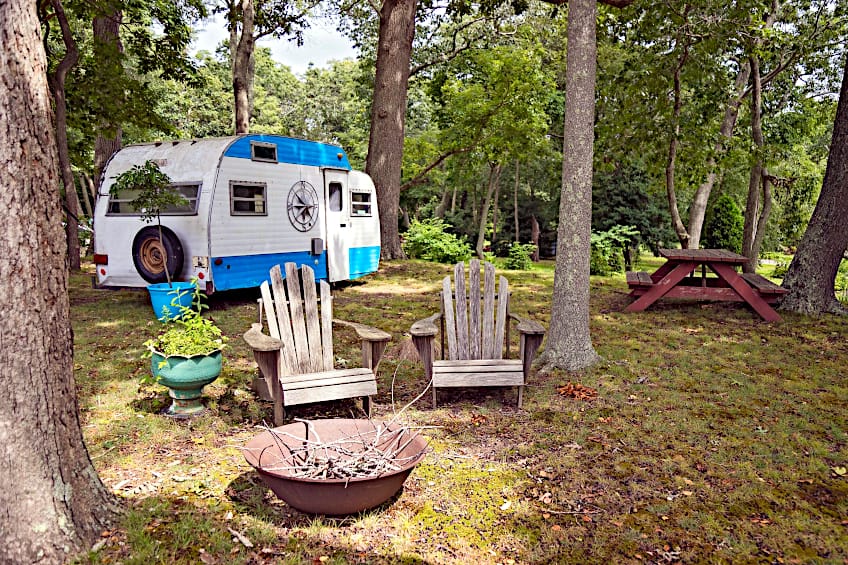
Ensure Your Pit or Ring Is Safe
Ensuring that your fire pit is deep enough to keep fire from accidentally spreading and that your fire ring doesn’t consist of combustible materials is another thing to keep in mind.
If you are making your fire in a communal fire pit that has been used before, clean out any debris before you begin laying out your construct.
Keep Water Nearby
You should be prepared to extinguish your fire at all times. Keep a container of water nearby or a shovel and some dense soil. This will allow you to react quickly should the fire accidentally spread or if some accelerant is accidentally added to it. When extinguishing your fire ensure that nobody (including yourself) is too close to the pit/ring.
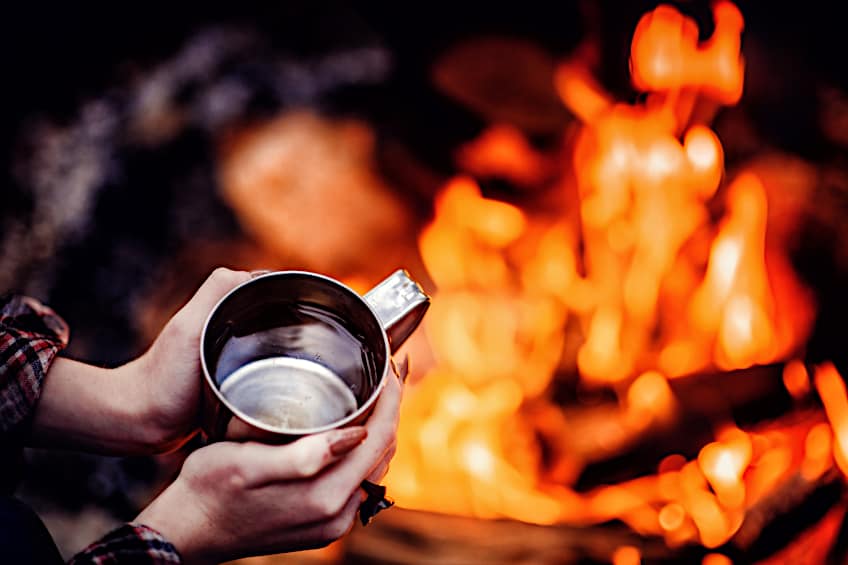
Keep an Eye on Your Fire
Unattended fires are one of the most common reasons fires grow out of control. Whether it’s fuel wood toppling out of the designated area or the fire burning uncontrollably, the results can be disastrous, especially if it happens in wooded or brush-dense areas.
Always ensure you have visual contact with your fire and that it is never left unattended.
Understanding Fire and Its Elements
Fire seems like a complicated element but in reality, fire consists of (primarily) three components, and when they’re combined in a certain way, they’re capable of generating heat and light that can be used for a number of things. Fire is best understood through the triangle of fire.
Oxygen
The first thing needed to make fire is oxygen. Oxygen is needed to ensure the combustion process takes place and fire in the conventional sense cannot be created without it. When starting a fire you will need a decent amount of oxygen to facilitate the production process, and without it, starting a fire is virtually impossible.
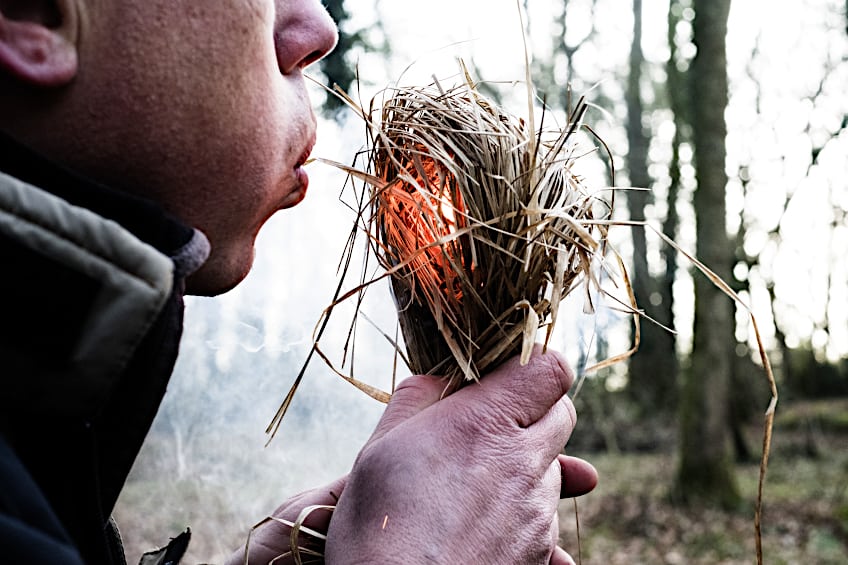
Fuel
Fuel is an essential part of any fire. Fire needs something to consume, whether it be wood or gas, fire needs fuel to sustain itself. In the presence of a combustible material like wood or gas, a sufficiently powerful spark in combination with oxygen can create fire.
However, using materials like rubber and plastic as fuel for your fire can release toxic fumes into the immediate environment and greater atmosphere, which is decidedly bad for the environment.
Friction
To start a fire, you will also need the presence of heat. When our ancestors started fires they used flint or rubbed sticks together to generate friction, which generated heat, which would eventually lead to the generation of fire. While gas fires and electrical fires do not need friction to ignite, you will need fiction (whether in the form of flint in a lighter or rubbing sticks together) when starting a basic fire.
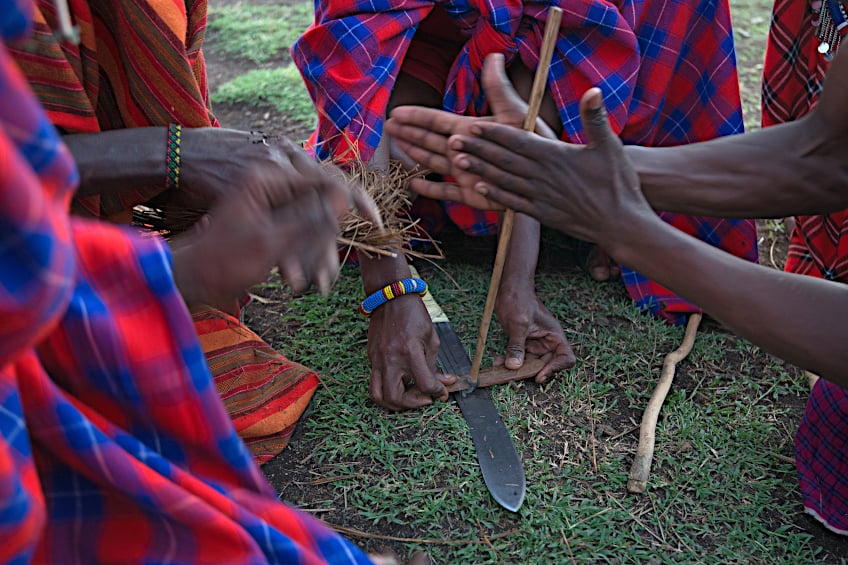
Troubleshooting Common Fire-Starting Challenges
Starting a fire is relatively straightforward. However, it does rely on a number of external factors and your materials being just right. To ensure that you’re always prepared to start a fire, we’ve prepared a short list of things you should take into account should you find yourself struggling to get your wood burning.
Windy Conditions
The strange thing about windy conditions is that they can both assist you in starting your fire (by providing air so the fire breathes) and prevent you from starting your fire altogether (by extinguishing your initial flame). This is why picking a good location to start your fire is extremely important even when camping.
If you find yourself dealing with extreme winds and cannot find natural cover, you can always make your own.
You can use your body to block the wind while you light your fire, you can increase the height of your fire circle by adding additional rocks on top of your existing ones, or you can dig a hole and start your fire inside it.
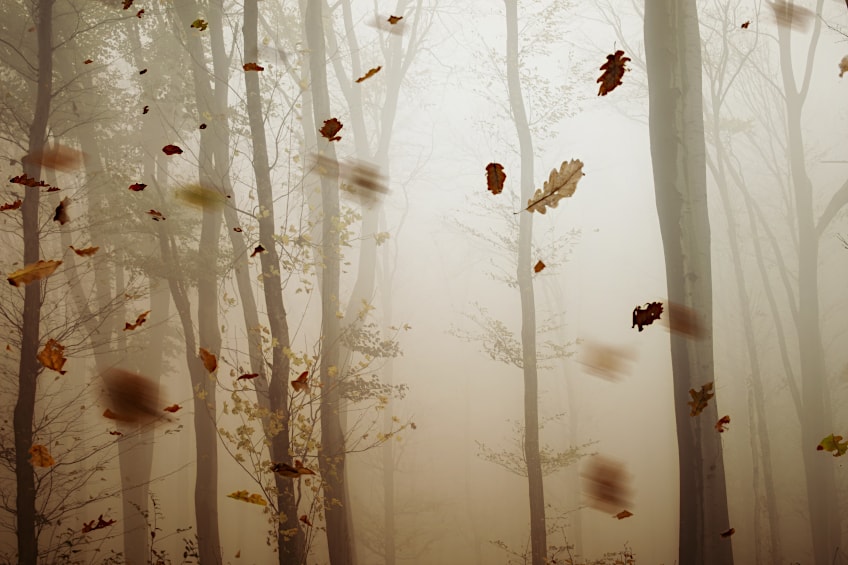
If you regularly camp in windy conditions, you should consider investing in a special camping lighter. There are many of these on the market, some of which come equipped with a little windshield that allows you to both strike a flame and ignite your kindling! These aren’t too expensive either and are a must-have for regular campers.
Wet Wood
Experienced campers tend to avoid wet wood at all costs. However, sometimes we are forced to work with what we have, which means you’ll need to get creative. The first thing you should do is attempt to find dry wood, and if you can’t, you’ll have to dry your existing wood either by creating a smaller fire with kindling or leaving it out to air dry.
One of the best places to find dry wood is high up in trees.
They are exposed to higher wind speeds and sunlight, and due to their height, they dry faster than branches that are lower down on the tree. If you cannot climb a tree, you could try getting some dry wood from inside fallen logs (they are usually quite dry but watch out for insects). If you still aren’t having any luck, you could try looking for wood in better areas. Searching for dry wood in elevated areas might yield better results, as just as branches that are high up in trees, wood found on cliff tops or inclines are more likely to be dry compared to wood found on plateaus.
Fuel Wood Will Not Ignite
Once kindling has been lit, it’s easy to get excited and assume that your fuel wood will automatically ignite. However, you should keep an eye on your fire structure as things don’t always go as planned. Fuel wood can fail to ignite due to a number of reasons, but there are a few ways around this problem since it’s pretty common.
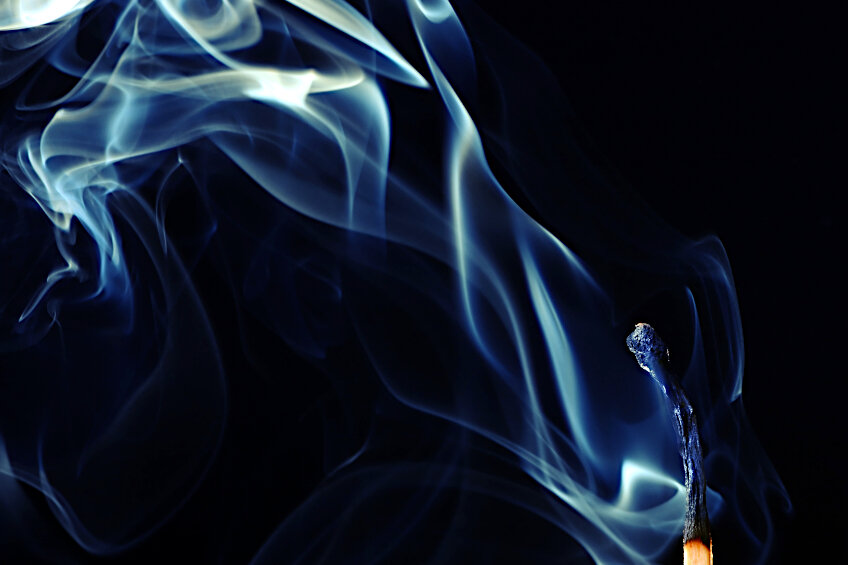
One of the most common reasons for ignition failure is a lack of oxygen. That happens when the kindling has been packed too tightly, upsetting the oxygen ratio, so the best way to combat this is to switch up your structure. Many beginners start out with the teepee technique which can be packed too tightly, and if you’ve done the same simply rearrange your fuel wood and kindling to a log cabin figuration.
If you don’t like the idea of picking your stack apart, you could try introducing more air into your fire by force.
You could try slightly shifting your wood pile to face prevailing winds or you could fan your kindling once it catches fire. Alternatively, you could simply dig a Dakota fire hole and avoid the oxygen issue entirely by introducing a dedicated airflow.
Dealing With Excessive Smoke or Poor Conditions
Most of us start a fire with a purpose. Whether it’s to cook a meal, illuminate the environment, or keep warm it can be extremely frustrating.
There are a couple of ways you can work around a fire failing to start, or a fire producing more smoke than heat. To make things a bit easier for you, we’ve put together some ways to work around these problems.
Identify Issues With Fuel or Airflow
Usually, when a fire is producing too much smoke it’s a result of airflow or the fuel logs being burned. Wet or damp fuel logs can produce a lot of smoke depending on the type of wood you are burning, so always ensure that your logs are dry to avoid dealing with too much smoke. Alternatively, if you’re stuck with the damp logs, ensure that the fire is positioned in such a way that the wind blows the smoke away from you.
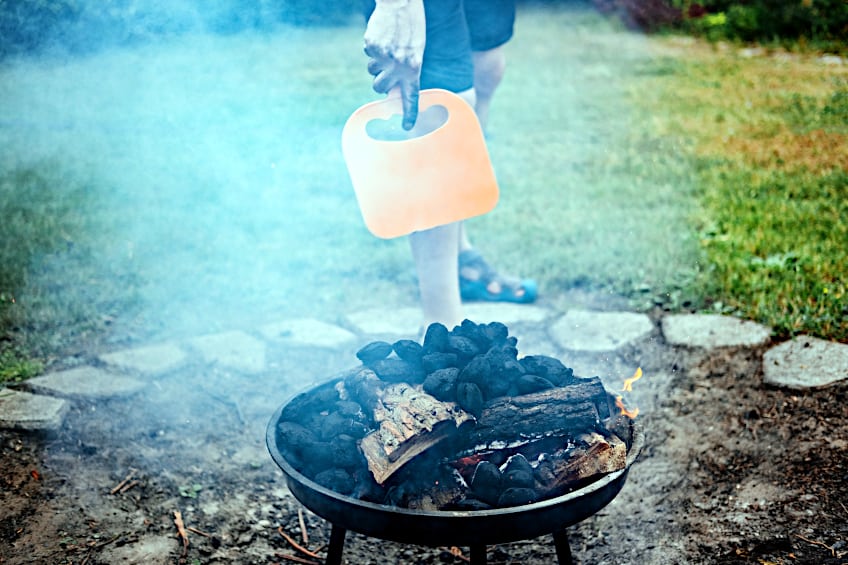
Techniques for Improving Heat Production and Efficiency
Efficiency isn’t something that is associated with setting materials on fire, but you can make your fire last longer and burn hotter using the right techniques.
The upside-down fire configuration produces more heat and burns longer than an open-top fire, and a Swedish torch configuration uses far less fuel while producing enough heat to cook a meal.
Both of these techniques produce far less smoke and are far more efficient in terms of energy production when compared to other techniques we’ve covered above. That being said, it’s best to assess what you intend to do with your fire and where you intend to start it before you begin constructing your fire structure.
These fire-starting techniques are useful for people of all skill levels and can be used in many environments. With some practice and the right tools, you can execute all of these techniques with ease. Just be sure that the technique you choose suits the environment you’re in and what you’d like to do with your fire once it’s up and running.
Frequently Asked Questions
What Is the Proper Way to Start a Fire?
With so many techniques out there, what is the proper way to start a fire? The best way to start a fire is to dig a pit, configure your burn material, then configure your kindling. Finally, ignite your kindling to start the fire.
Can You Start a Fire With Household Items?
Wondering how to start a fire with household items? There are many common items that can be used to start a fire, including pocket lint, wine corks, a magnifying glass, and even hand sanitizer. If you want to know how to start a fire with household items like the ones mentioned above, there are many video tutorials online.
Can You Start a Fire Without a Lighter?
Are you wondering how to start a fire without a lighter? There are actually many options including matches, using friction, flint, and even a magnifying glass. These generate friction and focus heat, which is how to start a fire without a lighter if you ever find yourself in this position.

I have been into woodworking since 2005 and woodturning since 2011. Because of my love for wood and woodworking, I started woodhappen.com to teach other enthusiasts about how to finish and seal wood, the best woodworking tools, the different types of wood, and everything else related to woodworking! Read more about me here.

